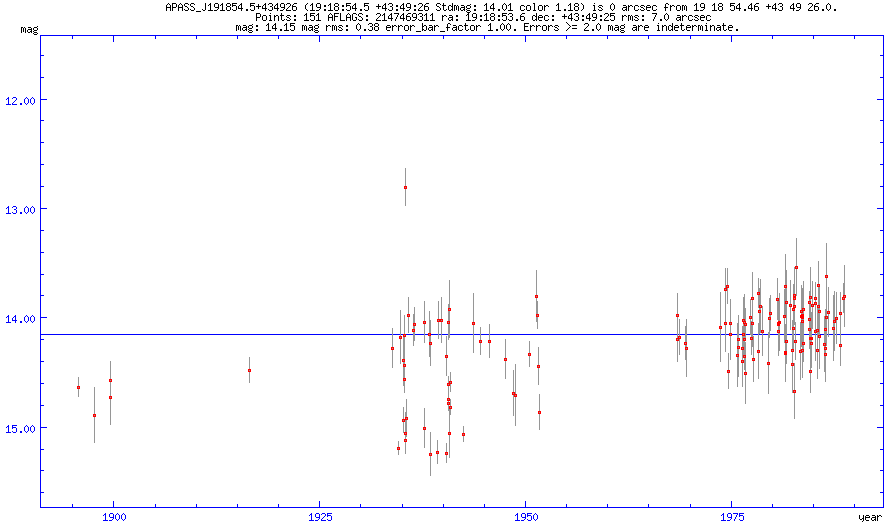The Harvard Plate Stacks have been a home-away-from-home for AAVSO members visiting Boston for decades. We've seen the DASCH project progress over the years through many talks at AAVSO meetings, mostly (all?) by Ed Los. So it's exciting to see their first data release!
Their web site is very easy to use and provides a ton of customization options. The data release is limited to a few fields. Among them are the Kepler fields, which many of us are familiar with thanks to all the variables that have been discovered there (and past AAVSO campaigns on the NGC 6811 Kepler field). Below is a sample light curve, of the EB V2279 Cyg. You can clearly see an eclipse here, and possibly more than one.
The web site really lets you choose how to filter the data. It also includes scans of the plates themselves. As someone who has spent many days in the plate stacks, often times wasting hours just trying to find the darn field, I really appreciate how cool that is.
APASS has a role in this project. The fields are spatially calibrated with GSC 2.3.2 and APASS. And they use APASS nomenclature for many of the stars, making it easy to link the data with VSX info and AAVSO data (if it exists). Kudos to Arne and the APASS team.
HQ probably needs to come up with a policy for reporting this data, or even if they want us to do that. I don't envy that discussion. :)
Thanks to NSF/Harvard/Josh/Ed/etc. for such an awesome resource!!!



